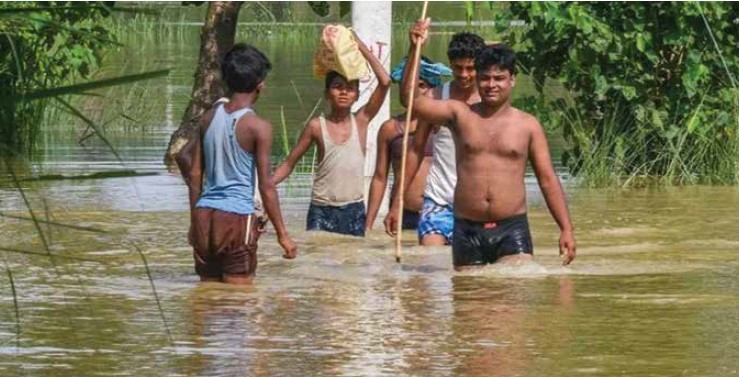Sagar Jha is a Project Management Associate at Pratham Foundation, primarily focusing on the education sector. With extensive knowledge in disaster management and development, he brings valuable insights into both fields. His family roots are in Bihar, and he frequently visits his native place, where he actively explores organizations working in specific sectors to understand their contributions to local development and resilience.
This article contains a concise overview of the significant role civil society organizations play in managing Bihar’s recurring floods. Despite government efforts, resource limitations and infrastructure challenges leave gaps in disaster response, which NGOs and local groups help bridge. Organizations like ActionAid India and Oxfam India contribute by setting up early warning systems, delivering essential relief, and supporting long-term resilience efforts, such as promoting flood-resistant infrastructure and addressing food insecurity, making their involvement critical to flood mitigation and recovery in the state.
Bihar, one of India’s most flood-prone states, faces recurrent flooding that impacts millions of people each year. With the Ganges, Kosi, Gandak, and other rivers flowing through the region, the state is vulnerable to excessive monsoon rains, river overflows, and water mismanagement in the upstream regions. While the government has implemented numerous flood mitigation strategies, the contribution of civil society, including Non-Governmental Organizations (NGOs) and local bodies, remains indispensable in managing and mitigating the effects of these devastating floods.
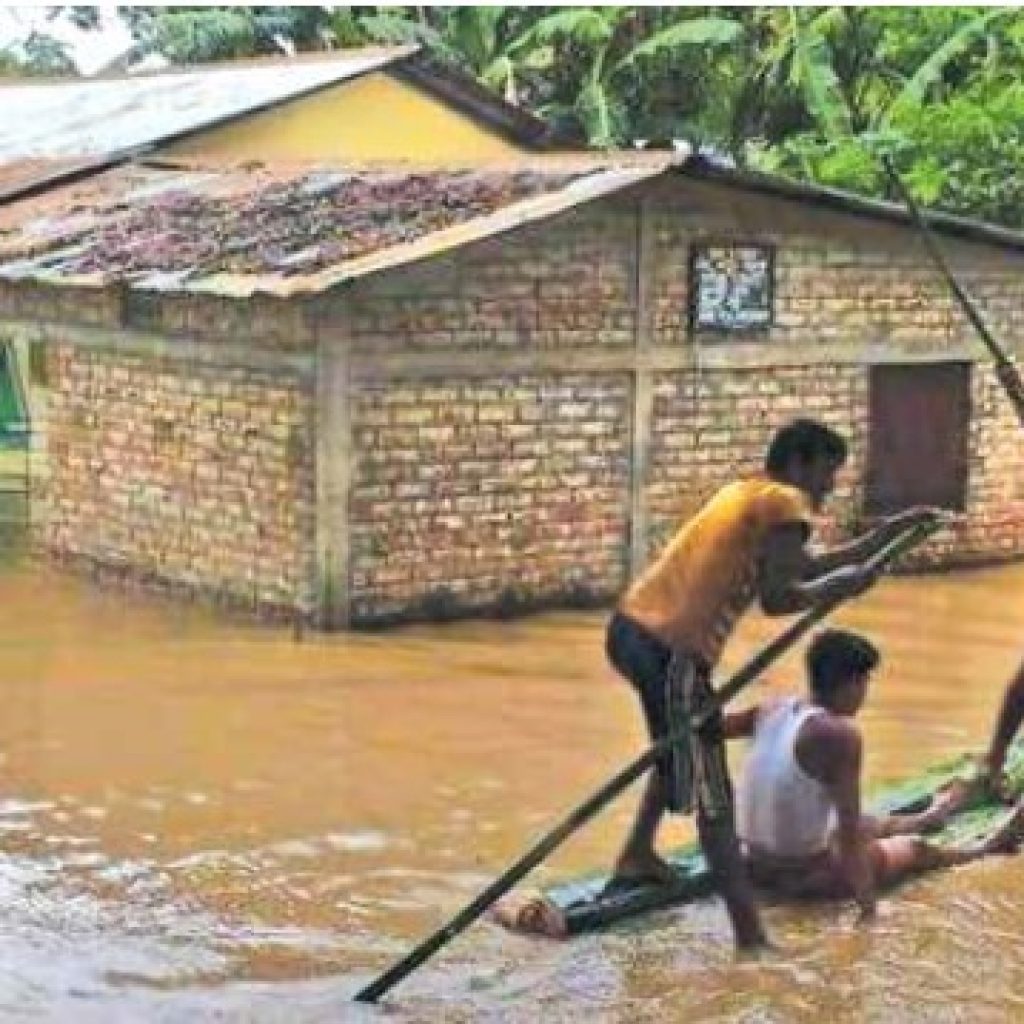
The Scale of the Challenge
Every year, large swathes of Bihar, particularly its northern districts, experience severe flooding. This results in displacement, loss of life, destruction of property, and damage to essential infrastructure such as roads, schools, and healthcare facilities. The state government, while proactive in relief efforts, often faces challenges related to resource constraints, bureaucratic delays, and inadequate infrastructure, leading to gaps in timely disaster response.
Civil society organizations, however, have played a crucial role in bridging these gaps. The agility, local knowledge, and community-based approach of these NGOs have proven instrumental in flood preparedness, response, and rehabilitation.
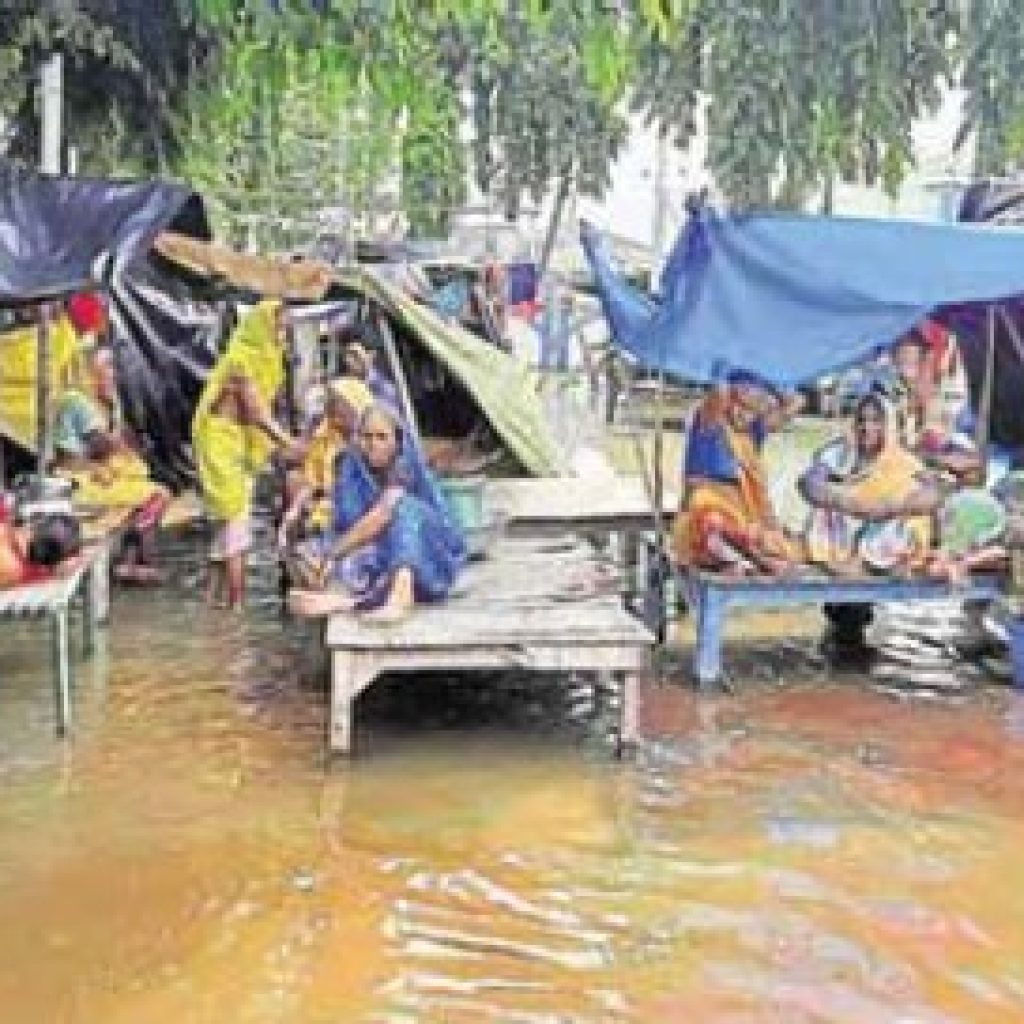
Grassroot Level Organizations Contributions to Flood Management
Bihar is currently grappling with one of the most destructive flood seasons in recent memory. With 18 districts severely affected, the devastating floods have claimed hundreds of lives and displaced over 7.2 lakh people. This annual crisis has inflicted widespread damage to homes, infrastructure, and agriculture, pushing vulnerable communities into deeper poverty. The floods have disrupted the lives of more than 1.4 crore people, leaving vast rural populations dependent on emergency aid and recovery support. In this dire situation, while government agencies have been leading the rescue and relief efforts, it is the contribution of civil society organizations, especially NGOs like ActionAid India, that has proven critical in bridging the gaps and providing life-saving assistance to affected populations.
The floods in Bihar this year have taken a heavy toll, with 304 reported deaths thus far, and the numbers continue to rise as the monsoon persists. The most severely affected areas include Araria, Sitamarhi, and West and East Champaran. In addition to human casualties, the floods have decimated livelihoods, submerging thousands of hectares of cropland and killing livestock, which are the backbone of rural Bihar’s economy. The floods have worsened food insecurity and limited access to clean drinking water, elevating the risk of disease outbreaks. Marginalized communities, such as Dalits, women, and small-scale farmers, have been hit particularly hard by this crisis, as their socioeconomic vulnerabilities are compounded by the lack of resources to recover from such catastrophic events.
ActionAid India, along with other NGOs like Oxfam India and the Bihar Inter-Agency Group (IAG), has been at the forefront of relief efforts in Bihar, working tirelessly to support affected communities. One of the key contributions of these organizations has been in establishing early warning systems that provide timely flood alerts to vulnerable populations. By leveraging community-based networks, ActionAid has developed mobile-based alert systems that inform residents of impending floods, allowing them to evacuate to safer areas, secure their belongings, and protect their families. These early warning systems have been critical in reducing casualties and ensuring that people in remote areas receive timely information about the evolving flood situation.
In the aftermath of the floods, ActionAid has been instrumental in delivering immediate relief to the hardest-hit communities. Through rapid needs assessments in districts like West Champaran, East Champaran, and Darbhanga, the organization has been able to prioritize the distribution of food, clean water, and shelter materials to the most vulnerable groups. For instance, ActionAid has provided emergency rations to over 2,500 Dalit and minority families in Sitamarhi, West Champaran, and East Champaran. Additionally, they have supported the government’s efforts to decontaminate water sources in East Champaran’s Dhaka block to prevent the spread of waterborne diseases, which are common in flood-hit areas.
At the same time, local NGOs and grassroots organizations have played a vital role in supplementing these efforts. They have been key in mobilizing rescue operations and distributing relief materials, particularly in hard-to-reach areas where government assistance is often delayed. Women-led self-help groups, empowered through government and NGO programs, have stepped up to identify vulnerable households and ensure that aid is distributed equitably. These groups have also been involved in setting up community kitchens that provide meals to displaced families, addressing the immediate food insecurity caused by the floods.
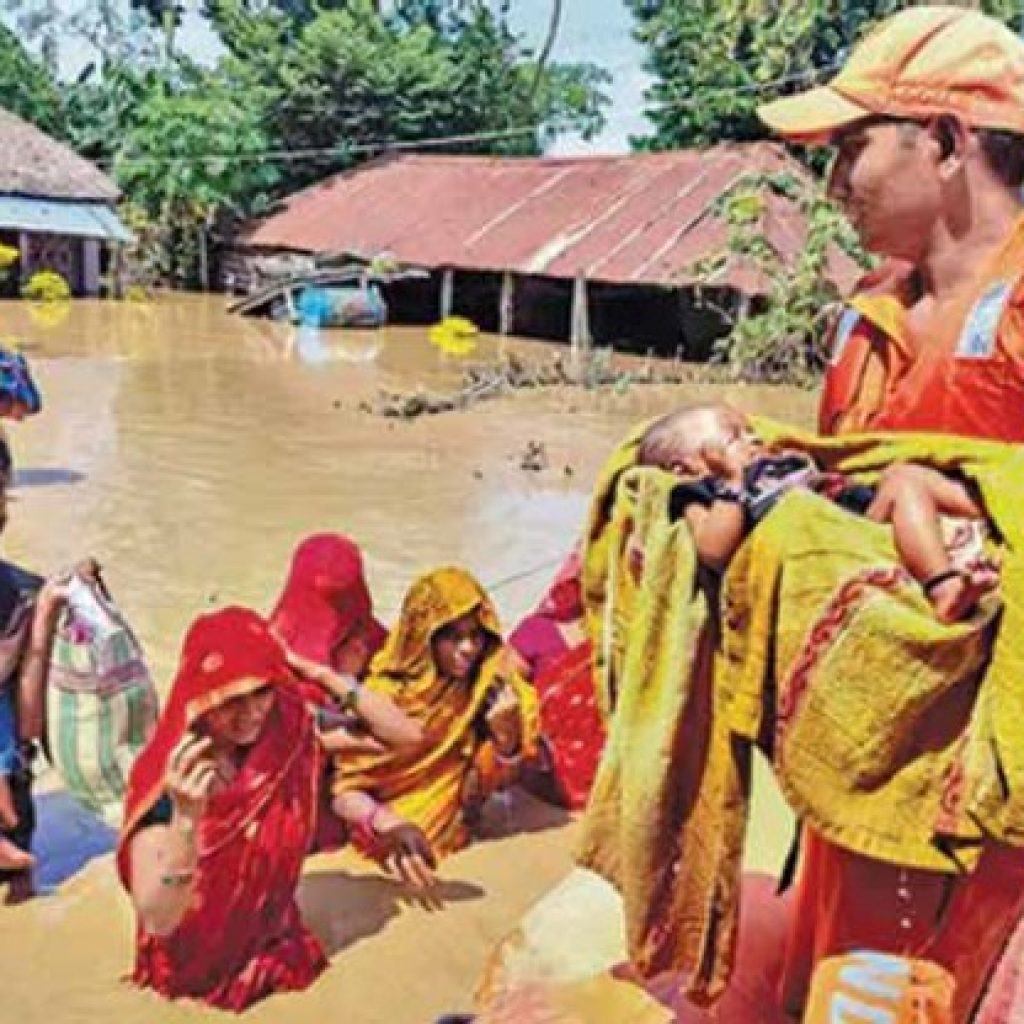
One of the most pressing needs during the floods has been providing shelter to displaced families. ActionAid, in coordination with local bodies and the state government, has helped set up temporary shelters using tarpaulin sheets, ropes, and bamboo poles, ensuring that people have a safe place to stay as they wait for the floodwaters to recede. The organization has also been advocating for long-term support to help affected families rebuild their homes once the floodwaters recede, particularly focusing on flood-resistant housing that can better withstand future disasters.
In addition to providing immediate relief, ActionAid has focused on long-term recovery and rehabilitation efforts in Bihar. The organization has initiated programs to support farmers who have lost their crops and livestock, providing them with seeds, livestock feed, and agricultural tools to help them restart their livelihoods. By addressing the economic devastation caused by the floods, these programs aim to build the resilience of rural communities, enabling them to recover more quickly and withstand future disasters.
ActionAid’s interventions have also extended to the health and sanitation needs of affected communities. In flood-hit areas, access to clean drinking water and proper sanitation is a major concern, as stagnant water becomes a breeding ground for diseases. ActionAid has provided hygiene kits, water purification tablets, and basic medical supplies to thousands of families, ensuring that they have the resources they need to stay healthy during the recovery process. Additionally, the organization has worked with local authorities to decontaminate water sources and build raised hand pumps that are less likely to be submerged during future floods.
While civil society organizations have been essential in addressing the immediate impacts of the floods, their role in long-term resilience-building cannot be overlooked. NGOs like ActionAid have been involved in creating infrastructure that is better suited to withstand floods, such as raised platforms for livestock, elevated public health centers, and flood-proof homes. These initiatives are vital in reducing the damage caused by floods and minimizing the need for emergency aid in the future.
Despite the significant contributions of NGOs and local bodies in flood management and relief in Bihar, the need for additional support remains urgent. The scale of the crisis demands greater coordination between government agencies, civil society, and the private sector to ensure that the most vulnerable populations receive the help they need. With the monsoon season still ongoing, the challenges of providing food, shelter, clean water, and medical care to displaced families will only intensify. As the situation unfolds, organizations like ActionAid will continue to play a crucial role in saving lives, restoring livelihoods, and building resilience in Bihar’s flood-affected communities.
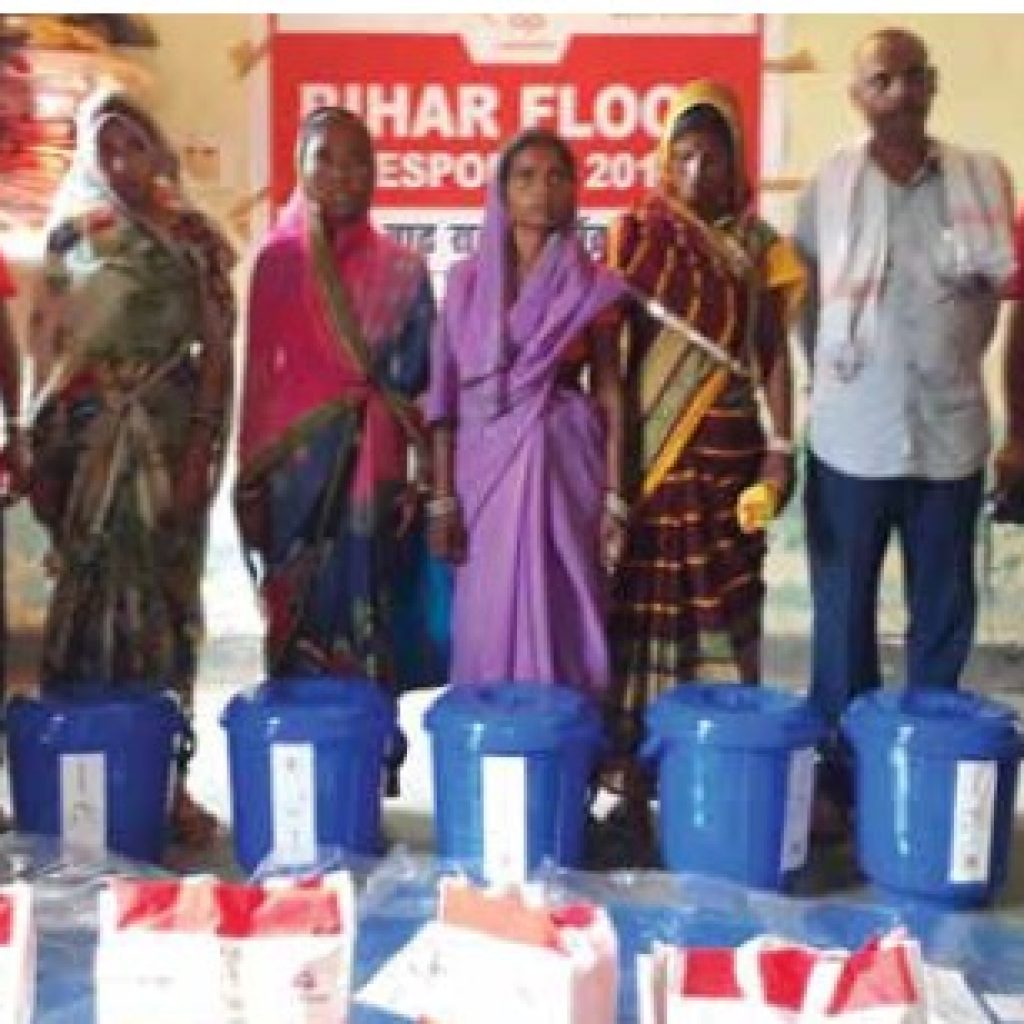
The floods in Bihar have once again highlighted the critical role that civil society organizations play in disaster management. Through their community-based approach, rapid response capabilities, and focus on long-term resilience, NGOs like ActionAid India have become indispensable partners in managing the annual flood crisis in Bihar. However, to truly address the root causes of these disasters and mitigate their impact, greater collaboration, funding, and policy support will be necessary. Only by working together can we hope to build a future where Bihar’s communities are not just surviving the floods, but thriving in their aftermath.
Challenges Faced by Civil Society Organizations in Bihar
Despite their vital role in disaster management and community resilience, civil society organizations (CSOs) in Bihar encounter a myriad of challenges that hinder their effectiveness and sustainability. One of the most pressing issues is limited funding, particularly for smaller grassroots organizations. These organizations are often at the forefront of disaster response and recovery efforts, relying on donations, grants, and volunteer support. However, the funding landscape can be competitive and uneven, with larger NGOs often receiving the bulk of available resources. This disparity leaves smaller, community-based organizations struggling to maintain their operations, limiting their capacity to implement long-term programs that could help communities better prepare for and recover from floods. Without adequate financial resources, these organizations may find it challenging to attract and retain qualified staff, invest in necessary training, or expand their outreach and services, ultimately affecting the communities they serve.

Another significant challenge faced by CSOs in Bihar is the coordination between government agencies and non-governmental organizations. While collaboration is essential for effective disaster management, bureaucratic hurdles often complicate these relationships. Government agencies may have different priorities or lack the necessary frameworks to facilitate collaboration with NGOs, leading to fragmented efforts in addressing the needs of affected communities. In some cases, NGOs may find it difficult to navigate the regulatory environment, which can be cumbersome and slow, further delaying their response to disasters. This lack of synergy can result in duplicated efforts, wasted resources, and ultimately, a failure to address the urgent needs of those affected by floods. For CSOs to be truly effective in their roles, there must be a commitment from both governmental and non-governmental entities to foster open lines of communication, establish clear roles and responsibilities, and work collaboratively towards shared goals.
Moreover, while NGOs have demonstrated effectiveness in responding to floods through immediate relief efforts, there is an increasing recognition of the need for sustainable solutions that address the root causes of vulnerability. This includes advocating for significant investments in infrastructure development, such as improved drainage systems, flood barriers, and early warning systems, as well as the implementation of integrated river basin management strategies. The focus should not only be on short-term relief but also on building resilient communities that can withstand future disasters. NGOs play a crucial role in advocating for these changes, but their voices can often be drowned out by political interests and bureaucratic inertia. Therefore, it is imperative for CSOs to continue to engage with policymakers and advocate for comprehensive policy reforms that prioritize long-term strategies for flood risk reduction.
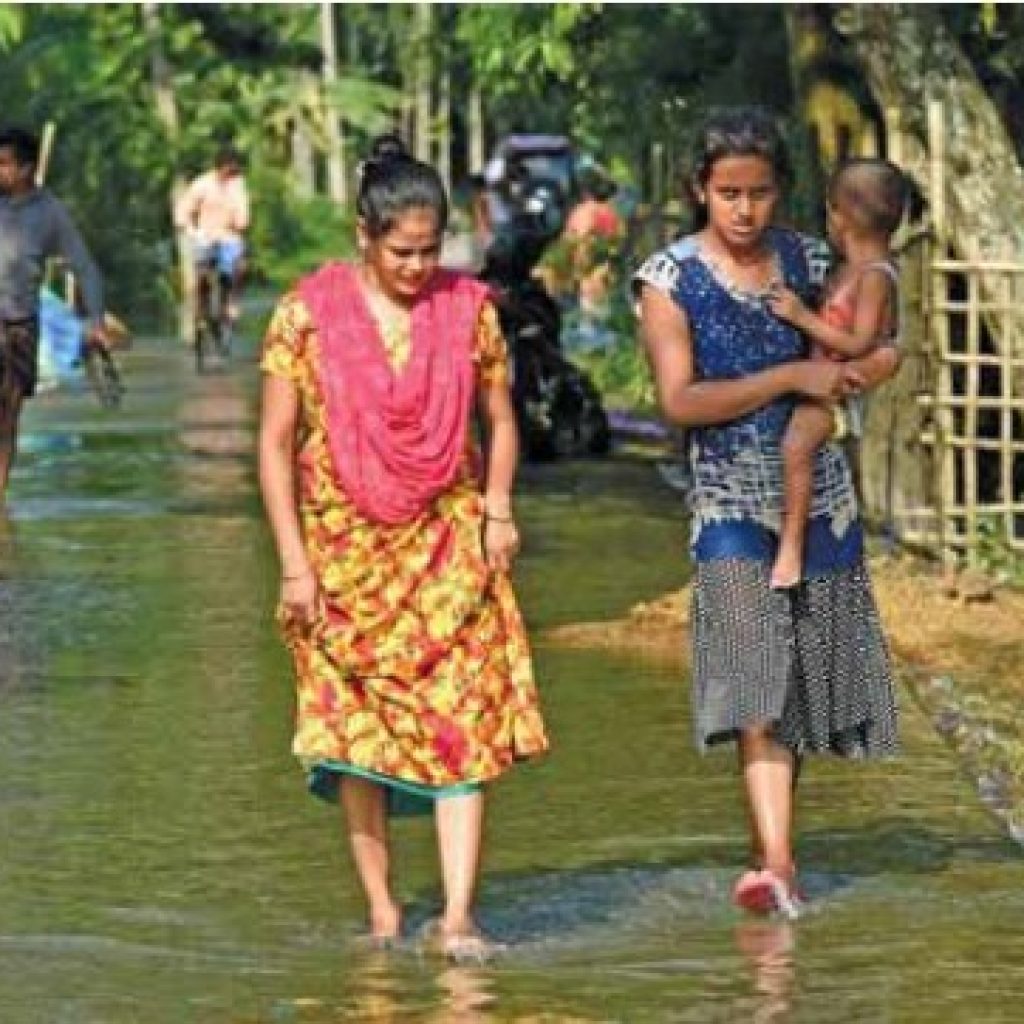
Ultimately, while civil society organizations in Bihar are making strides in addressing immediate needs in the wake of disasters, they must also navigate complex challenges that impede their effectiveness. A concerted effort is needed from all stakeholders—government agencies, NGOs, community members, and international organizations—to build a cohesive framework that supports sustainable development and disaster resilience. By overcoming funding limitations, improving coordination, and prioritizing long-term solutions, CSOs can strengthen their impact and contribute to a safer, more resilient future for communities vulnerable to flooding in Bihar.
Tides of Trouble: How Climate Disasters in Bihar Fuel Violence Against Women
In August 2017, devastating floods ravaged Bihar, leaving 3,000 square kilometers of the state submerged and forcing nearly 900,000 people from their homes. The floods claimed the lives of 815 people, while thousands of others sought refuge on roads, rail tracks, and rooftops. Amidst this humanitarian crisis, invisible from the aerial surveys conducted by Prime Minister Narendra Modi, was a different kind of devastation—an upsurge in violence and insecurity, particularly against women and girls.
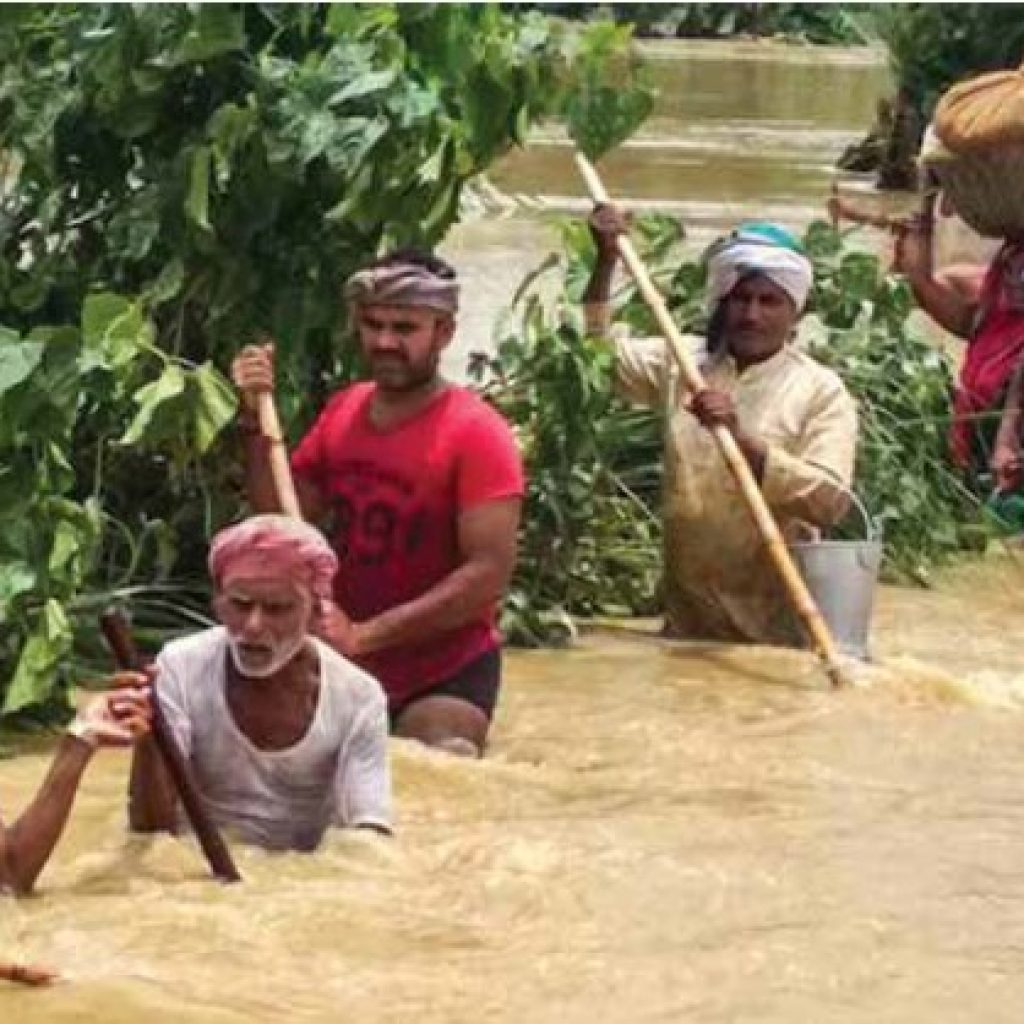
Hema Devi, a teenager from Araria district, became one of the countless victims of this rising tide of gender-based violence. After the floods destroyed her village, she and her mother were forced to live in a makeshift tent along a national highway. In February 2018, months after the floods, a man offered her mother INR 5,000 (USD 67) in exchange for marrying Hema. Desperation and hope for a better future led her mother to agree. However, what followed was a nightmare—Hema was taken to Chandigarh, far from home, and suffered months of physical abuse before finally escaping. Her story mirrors the increased vulnerability of women and girls in the aftermath of disasters. In flood-affected areas like Bihar, extreme weather events exacerbate pre-existing social vulnerabilities, creating the perfect storm for violence against women.
The floods in Bihar, as in many other regions, not only destroy homes and livelihoods but also deepen the gender inequities that already plague these societies. In areas where men often migrate for work, women are left behind, burdened with raising families, managing households, and surviving amidst diminished income opportunities. Sons are seen as future breadwinners, while daughters are considered burdens, fueling discrimination and perpetuating harmful practices like dowry. This preference for male children intensifies during disasters, as families struggle to recover economically. Dowry demands, already a significant financial burden, further increase the vulnerability of young girls. Bina Devi from Katihar, a mother of three sons, explained the immense pressure on women to bear male children to secure their family’s financial future. After her husband’s death, her eldest son had to migrate at the age of 10 to support the family, a reality that shapes how families prioritize sons over daughters in the face of disaster-induced hardship.
Dowry concerns also leave families vulnerable to exploitation, with traffickers disguising themselves as prospective suitors offering to waive dowry in exchange for marrying young girls. Chandni, an 18-year-old from Katihar, recounted how her father was approached multiple times by such suitors, all from distant places, under the pretense of marrying her without dowry. Despite the financial pressures created by the floods, Chandni’s family has resisted these offers, suspecting them to be traffickers. Yet, for many families, the promise of avoiding dowry is too tempting to decline, especially when disasters like floods further erode their already meager earnings.
The threat of violence and exploitation extends beyond dowry and trafficking. Displacement caused by floods forces families into temporary shelters, where young women and girls are particularly vulnerable to harassment and sexual violence. In makeshift camps along highways and railway tracks, where tents are closely packed, privacy is scarce, and violence often follows. Activists working in Bihar report that in such camps, the risk of sexual harassment and violence is alarmingly high. Girls like Hema Devi, who once sought refuge in these camps, are left exposed to dangers far beyond the floods themselves. The vulnerability of women in disaster-prone areas like Bihar is multifaceted, shaped by the intersections of poverty, gender, and social marginalization.
Research increasingly highlights the link between climate change and gender-based violence. Studies conducted worldwide, from the Indian Ocean tsunami in Sri Lanka to floods in Pakistan’s Sindh region, have shown that women face increased risks of physical, emotional, and sexual violence in the aftermath of extreme weather events. In India, climate change exacerbates these risks, as recurring floods in Bihar create the conditions for a cycle of violence that disproportionately impacts women and girls. Yet, the data required to fully understand the extent of this problem remains scarce. Researchers have pointed out that the lack of sex-disaggregated data and indicators highlighting social inequities hinders efforts to examine the gendered impacts of disasters in India.
Despite the growing evidence of gender-based violence linked to disasters, government policies addressing climate change and disaster management remain largely gender-blind. A recent parliamentary report on flooding made no mention of women, and many state action plans on climate change fail to address gender at all. Even when policies do consider gender, they often treat women as a monolithic category, ignoring how other forms of marginalization, like caste, intersect with gender to compound vulnerabilities. Caste continues to play a significant role in shaping power dynamics in India, and climate-related disasters are only making these power imbalances more pronounced.
For women like Hema, Bina, and Chandni, the challenges posed by floods go far beyond the physical destruction of homes and livelihoods. These disasters magnify the social inequalities that women already face, deepening the cycles of violence, discrimination, and exploitation. Without targeted research, policies, and interventions that recognize the complex ways in which climate change affects women, especially those from marginalized communities, these cycles will continue to perpetuate, leaving women to bear the brunt of an increasingly unstable climate.
A Way Forward: Strengthening Civil Society’s Role
For a more effective flood management system in Bihar, it is essential to strengthen the collaboration between the government, civil society, and local communities. Public-private partnerships, capacity-building initiatives, and enhanced funding mechanisms for NGOs can empower these organizations to extend their reach and impact.
Civil society has already demonstrated its ability to mobilize resources quickly, foster community participation, and provide long-term rehabilitation support. With improved coordination, resource allocation, and infrastructure development, their efforts can be amplified to create a more resilient Bihar.
The role of civil society in managing the floods of Bihar cannot be overstated. From early warning systems to relief distribution and long-term recovery, NGOs and local bodies have become the backbone of the state’s flood management efforts. By working hand in hand with the government and the affected communities, civil society continues to be a crucial force in mitigating the impact of floods and ensuring the resilience of Bihar’s most vulnerable populations.


